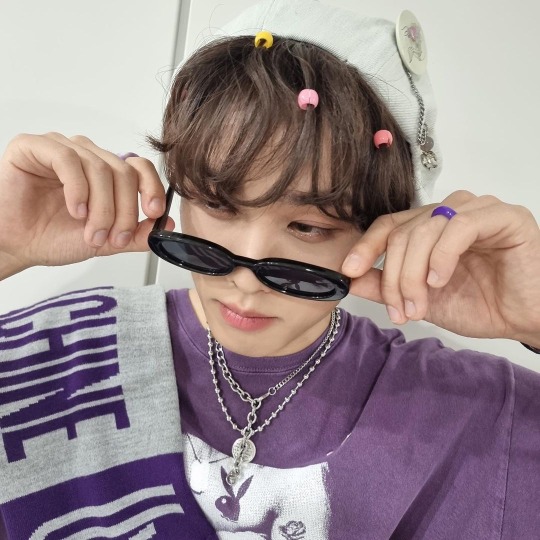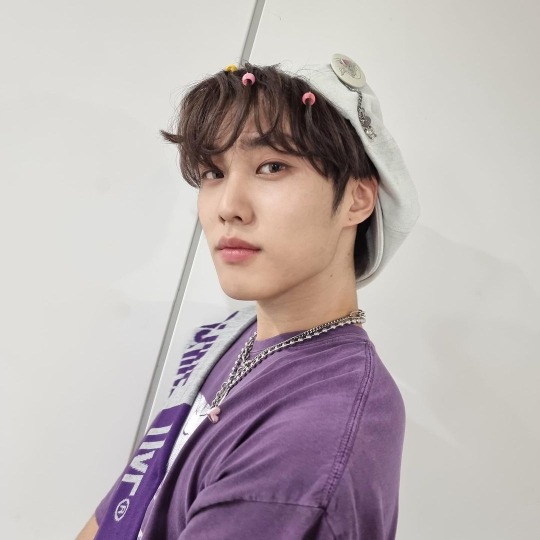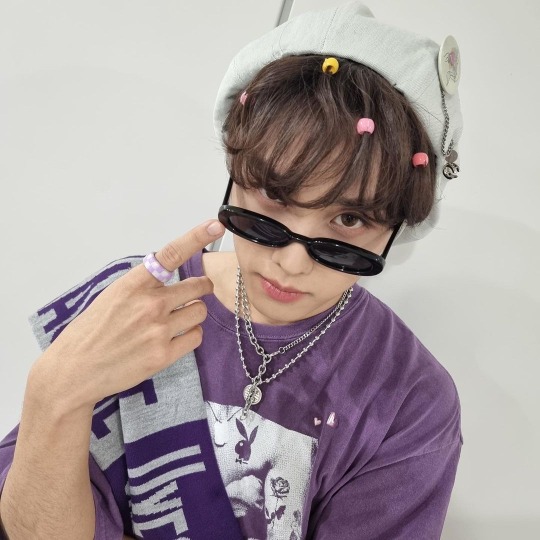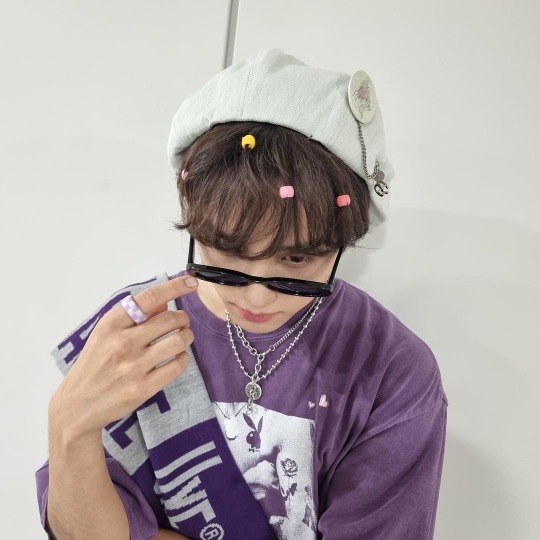#middle school girls in 2009 would have worn to school (i speak from experience of such girls)
Text









jacob ig update 221231
#white walker blue or whatever#jacob#the boyz#tbz#*up#sns#ult#jacob bae#this was so cute i lost 5 years of life expectancy#the playboy bunny is so funny it’s like yes u are the designated bunny but also we need u to wear this shirt that looks like something edgy#middle school girls in 2009 would have worn to school (i speak from experience of such girls)#also i’m so thankful even when they have to put stupid contacts on him at least usually they are a mildly normal colour and not like#*ults
37 notes
·
View notes
Text
Biography: Malala Yousafzai: Heart of an Activist
Malala was only a fifteen years old, Pakistani girl, about to go to school, when a Taliban gunman stepped in her school bus and shot her in the head. But she survived.
On the twelfth of July, 1997, Malala Yousafzai – a name meaning “grief-stricken,” named after a poet and female warrior from Afghanistan – was born to Ziauddin and Toor Pekai Yousafzai, parents of a lower-middle-class family, in Swat Valley, Pakistan – a quiet but favored tourist spot, known well for its festivals during the summer. With two younger brothers, Khushal and Atal, she studied in a school called Khushai Public School founded by her father, Ziauddin, whose diplomatic and humanitarian work in educational activism has brought her much inspiration. This peace in her hometown ended, however, when the Taliban arrived.
The Taliban, self-proclaimed Islamic Emirate of Afghanistan, is a political movement of Sunni Islamic fundamentalism in Afghanistan. Essentially extreme religious nationalists, they have become a major threat to much of the Middle East and its governments, as they’ve waged war in Afghanistan with suicide bombings and other attacks, and conquered some areas of Pakistan – including the hometown of Malala.
As the Taliban has a strong belief that girls and women should not be educated, and thus, have no right to education, they began to attack all-girls schools in Swat Valley. On September, 2008, an eleven-year-old Malala delivered a speech at a press club in Peshawar, Pakistan, to a media-filled audience; entitled: “How dare the Taliban take away my basic right to education?” It was the first day of a long journey of educational activism.
During the latter part of the year, Aamer Ahmed Khan of BBC wanted to do a more detailed coverage on the developing influence and control of the Taliban in Swat Valley; to show how ordinary citizens live under these dangerous circumstances. To do this, they concluded, a young girl living in those conditions could blog anonymously about her life and experiences. They fell in touch with Ziauddin in this search for a young girl, but no one was willing, as it was seen as too life-threatening for the children by their families. Until, finally, Ziauddin suggested his own daughter – Malala. It was a unanimous agreement from the editors of BBC. However, to secure her safety, BBC made sure she wrote under a pseudonym. She chose, along with her mother, the name “Gul Makai” from a character in a Pashtun folktale.
In the early days of January, 2009, her first blog entry was published in their local BBC, BBC Urdu. She would write them by hand on pieces of paper, then submit them to a reporter, who would scan and send them attached to e-mails. More blog entries were posted, following her thoughts as the military arrived, commencing First Battle of Swat.
After bombing hundreds of girls’ schools, the Taliban released an edict stating that girls are not allowed to go to school after the fifteenth of January, 2009. This brought an air of uncertainty in Malala’s school. The school recommended that the girls come to school in their casual wear, not in their uniforms, just to be safe. Additionally, fewer and fewer girls showed up, their families afraid of the consequences from the Taliban if they did. On the final day of school, and the first day of their December break – with no announcement from their principal on the date of the resume of classes – Malala and her friends looked up at the building as though it was the last time they’ll ever see it.
Once the ban took place, more schools were destroyed in their area. In her blog, Malala said that she and her friends were still talking about homework and examinations as though they were still going to return to school after the break. The optimistic were hoping they’ll be able to by February, but not too many shared the same thoughts.
Unfortunately, by February, girls’ schools were still closed. Uniting with these schools, private institutions for boys chose to stay closed as well, until the ninth of February, at least. When this day arrived, the Taliban only allowed girls to attend their primary education classes, which were co-education. Seventy students attended, out of the seven hundred who enrolled. Girls-exclusive schools, however, remained closed.
There was much gunfire in the streets. Her father comforted her, saying, “This is firing for peace,” as he had read in the newspaper that the government was going to sign a peace deal with the Taliban soon. However, later on that same night, when the peace deal was being announced, another round of stronger gunfire began outside.
Three days later, Malala was able to appear in their national current affairs show called Capital Talk, speaking out against the Taliban. Another three days after, the leader of the Taliban announced the lifting of the ban on female education, and that girls will be allowed to attend their classes until their exams on the seventeenth of March, with the condition that they were their burqas, a long outer garment worn by women to fully cover their head to their shoulders, transparent only at the area of their eyes.
So, on the twenty-fifth of February, girls-only schools were finally opened. Malala and her friends played and had fun in their classes like before, although only twenty-seven students attended. But at this time, the Taliban was still active. Tension rose between the military and the Taliban, however, and fear of this peace being more temporary than permanent spread in the area. However, soon, the Taliban was no longer as active, and on the twelfth of March, her BBC blog ended.
After a while, a New York Times reporter approached Malala and her father about filming a documentary. Through this, it was recorded that the Pakistani Army arrived around May, to regain control of the area during the Second Battle of Swat. Malala and her family evacuated and separated; she and her mother and siblings staying in the countryside with relatives, and her father going to Peshawar to protest and gather support, criticizing the Taliban at a press conference. As a result, her father received death threats over the radio from them. Here, Malala felt truly inspired by her father’s determined activism, and during that summer, she decided to become not a doctor, as she once dreamed, but to be a politician and to save their country.
Because of this documentary, Malala was already getting much attention from the world, appearing in various radio stations and television shows to advocate for female education. On December 2009, she finally revealed herself to be Gul Makai, the mystery blogger in BBC Urdu.
By 2011, she received a nomination for the International Children’s Peace Prize of an international children advocacy group, and soon won the National Youth Peace Prize and the National Peace Award for Youth from their prime minister, Yousaf Raza Gillani. A year later, Malala began to plan a foundation to help poor girls attend school.
Her profile became more public, recognized more and more everywhere in the world. But as it did, the more she received death threats – in the newspapers, sent to her own home, through social media. None of it stopped her, however, and it is because of this that the Taliban decided unanimously to kill her.
It was the ninth of October, 2012. She just had an exam in her school in Swat Valley, and was on her way home in a bus – until a masked gunman entered and demanded Malala to reveal herself, or everyone in the bus will be killed. Malala spoke up, and thus, she was shot in the head – going through it and down to her neck and ending up in her shoulder. Two more girls were wounded, but functional enough to explain what had happened. Malala was only fifteen years old.
Closer to death, she was sent to a military hospital in Peshawar, where she was operated on, removing portions of her skull to treat her swelling brain as well as the bullet in her shoulder. Offers to help her from Pakistani, Britain and Germany came in, but by the fifteenth of October, Malala was sent to the United Kingdom for more treatment. All of the expenses were paid by the Pakistani government.
Two days later, she woke up from her coma and was so far responding positively to her treatment. It was during this time that the United Nations released a petition to support her cause and to demand that all girls will go to school, with the slogan: “I Am Malala.”
But it wasn’t until the eighth of November when she was able to sit up on the bed; a month later when she was finally discharged from the hospital to be rehabilitated in her temporary home in the West Midlands; and another month when she had another operation to reconstruct her skull and was reported to being in a stable condition.
All of this – from the murder attempt to her recovery – were being covered by the media all over the world. People protested against the shooting in Pakistan; many more speaking out, such as the president of Pakistan, Asif Ali Zardari, United Nations Secretary-General Ban Ki-moon, the former president of the United States Barack Obama, Secretary of State Hillary Clinton, British Foreign Secretary William Hague, and celebrities such as Madonna and Angelina Jolie. Over two million citizens signed a petition that led to the first Right to Education Bill in Pakistan.
A year later, on her sixteenth birthday, Malala made her first public speech since the murder attempt in the United Nations to call for worldwide access to education, in front of an audience of more than five hundred youth education advocates from all around the world – the first Youth Takeover of the UN. They called this, “Malala Day.” But to Malala, this day was not hers; it is the “day of every woman, every boy and every girl who have raised their voice for their rights.”
Another year later, she co-received the 2014 Nobel Peace Prize, along with Kailash Satyarthi, an Indian children’s rights activist. Malala was only seventeen years old, the youngest Nobel laureate. She was also included in the Twenty-Five Most Influential Teens of 2014 of the Time Magazine.
Later that same year, a militant group of ten attackers called “Shura” was suspected to be behind her attack. They were arrested, and in April, 2015, were sentenced to life in prison by Judge Mohammad Amin Kundi with chance of possibility of parole and release after twenty-five years. Unfortunately, eight of them were released due to the lack of evidence connecting them to the attack.
This does not stop Malala, though. On her eighteenth birthday, she opened up a school by the Syrian border for refugees, to educate and train girls from ages fourteen to eighteen. It was funded by her not-for-profit foundation called Malala Fund. Currently, she is studying Philosophy, Politics and Economics in Lady Margaret Hall, University of Oxford.
0 notes